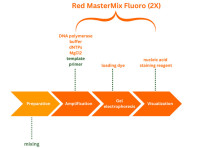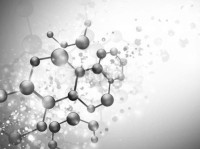Since the isolation of the first Taq DNA polymerase in 1976, PCR has become an integral part of the molecular biology laboratory. Of course, methods, reagents and protocols have evolved. The goal is clear: to make it better, faster, cheaper, and easier. Every day, lab technicians, students and scientists around the world spend countless hours pipetting and preparing PCR experiments. This makes it even more frustrating when errors and contamination only become apparent in the final step of the PCR workflow.
But how can the work in the PCR laboratory be optimised to ultimately minimise sources of error and at the same time save time, money, and nerves? We at Genaxxon would like to shed some light into the darkness of the laboratory and show how our new products around the Red Mastermix Fluoro (2X) can help to optimise your PCR workflow along a typical PCR workflow.
But how can the work in the PCR laboratory be optimised to ultimately minimise sources of error and at the same time save time, money, and nerves? We at Genaxxon would like to shed some light into the darkness of the laboratory and show how our new products around the Red Mastermix Fluoro (2X) can help to optimise your PCR workflow along a typical PCR workflow.
Nowadays there are many different suppliers and systems for polymerase chain reaction (PCR) and of its derivative techniques, quantitative, or real-time, PCR (qPCR) and reverse transcription PCR (RT-PCR). Competition gives you the opportunity to simplify diagnostics and to make research more financially favorable.


